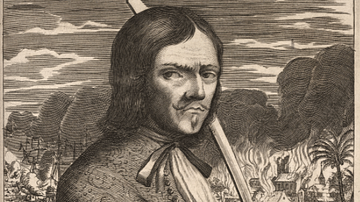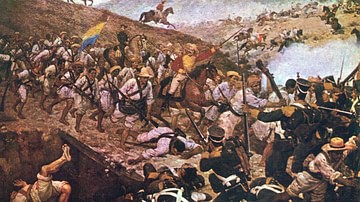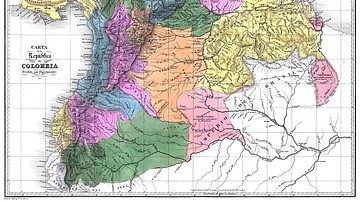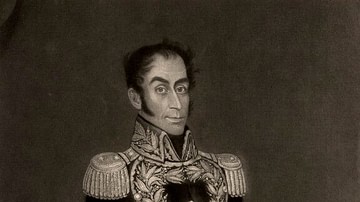Search
Summary 
Loading AI-generated summary based on World History Encyclopedia articles ...
Search Results

Definition
Spanish Main
The Spanish Main refers, in its widest sense, to the Spanish Empire in the Americas from Florida in the north to the northern coast of Brazil in the south, including the Caribbean. The term was initially more limited and referred only to...

Definition
François L'Olonais
François L'Olonais (also spelt L'Olonnais or L'Ollonais, c. 1630-1668), real name Jean-David Nau, was a French buccaneer and pirate who operated from Tortuga on Hispaniola. In 1667, he famously attacked Venezuela, then part of the Spanish...

Article
Pirate Havens in the Golden Age of Piracy
The buccaneers who roamed the Spanish Main and the pirates who plundered the Caribbean and the Indian Ocean during the Golden Age of Piracy (1690-1730) needed a place of refuge where they could share out and enjoy their loot. Pirate havens...

Article
Treasure Ports of the Spanish Main
The treasure ports of the Spanish Main such as Cartagena, Portobelo, Panama, and Veracruz were used to collect the riches the Spanish Empire had extracted from the Americas, ready for transport in the two annual treasure fleets back to Europe...

Image
Battle of Boyacá
The Battle of Boyacá, a victory during Simón Bolívar's campaign to liberate New Granada from Spain, painted by Martín Tovar y Tovar, 1890.
Federal Legislative Palace, Caracas, Venezuela.

Image
Map of Gran Colombia
A map of the Republic of Colombia (1819-1831), a state that covered much of northern South America after independence from the Spanish Empire, by Agostino Codazzi, 1840. The map depicts the Republic of Colombia divided into 12 administrative...

Image
Simón Bolívar
Simón Bolívar (1793-1830), Venezuelan military officer and statesman, mezzotint portrait by Charles Turner, 1827. Known as "The Liberator", Bolívar led several countries in South America to independence from the Spanish Empire in the 19th...

Definition
European Colonization of the Americas
The European colonization of the Americas was the process by which European settlers populated the regions of North, Central, South America, and the islands of the Caribbean. It is also recognized as the direct cause for the cultures of the...

Definition
Elizabeth I of England
Elizabeth I reigned as queen of England from 1558 to 1603. Her 44-year reign was so long and packed with momentous events that the second half of the 16th century is now known as the Elizabethan era and still regarded as a 'Golden Age' for...

Definition
Bartolomé de Las Casas
Bartolomé de Las Casas (1484-1566) was a Spanish Dominican friar and former conquistador who revealed the atrocities of the conquests of New Spain and Peru and who strove to protect the basic rights of indigenous peoples in the Spanish Empire...